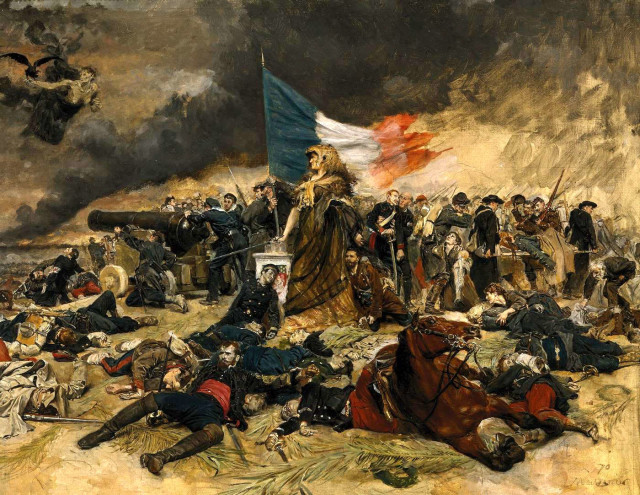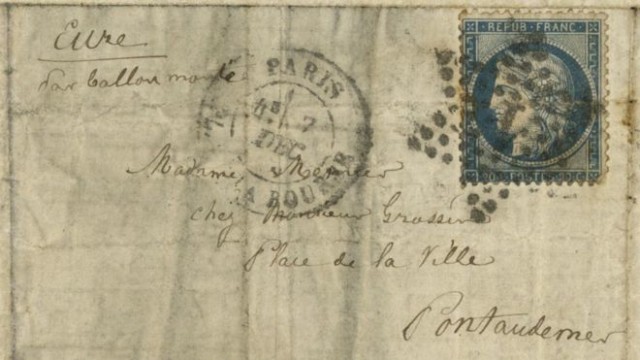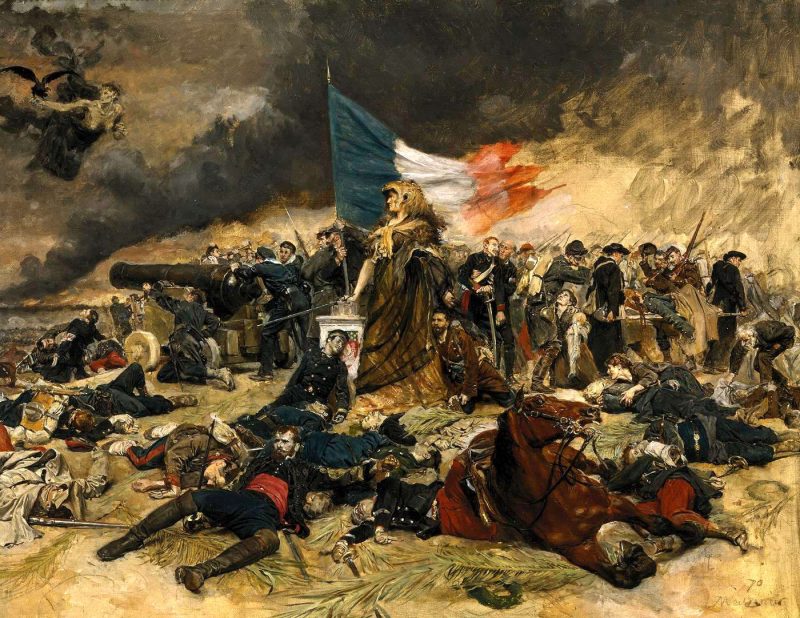
Australia’s national archive in Brisbane has come across a letter that was flown out of Paris by a balloon during the Prussian siege in the nineteenth century. The brief letter is from a man in the French capital to his mother, who at the time was located in Normandy. It is an endearing letter from a son to his mother inquiring about the safety of his family. The National Archives called this letter “intriguing,” but how it came to arrive in Australia and end up in their collection is a mystery.
Louise Doyle is the assistant director-general who alerted the BBC that the letter emerged in the planning stage of a potential exhibition organized in conjunction with the archive’s French counterpart. This required archivists to sift through their collections to determine which pieces of material would be suitable for the exhibition, It was then that they discovered this extraordinary piece of fascinating history.
The city of Paris was besieged by Prussian forces from September 1870 until January 1871 during the Franco-Prussian war. Ultimately, the French surrendered the entire city. According to the stamp on the letter, it was posted on December 7, during the middle of the battle. It took about a week before it was received by Madame Mesnier.

In a small, neat script the man writes that he just needs to know that his mother remains in good health. He mentions that the siege is not really affecting his health. The chance to eat meat is a rarity, but he asserts that they have plenty to get by on. No one in the household is complaining, as there are other things to eat. This may not have been the reality as many starved in Paris, during the siege.
The man asks his mother to hug his uncle, aunt, and “Maria” and he embraces his mother with all his heart. He signs the letter as “your devoted son.”The letter also includes a rather detailed description of the passion and dedication shown by his fellow Parisians who valiantly fought to hold the Prussians back. The man declared they could face some setbacks, but firmly believed that the Parisians would ultimately see success.
The letter measures only 20cm x 13cm, and is labeled in French for delivery by hot air balloon: “par ballon monte.” This is just one of almost two million letters that were sent out of Paris during this siege. This was an effective way to bypass the enemy, who had cut the telegram cables under the River Seine earlier in the conflict. Important people, such as politicians would be lifted in balloons out of Paris. In order to fit as many letters as possible inside the small space available in a balloon, each one was delicately folded into tiny envelopes.
Doyle described the relationship this man shared with his mother as both touching and moving. She felt it was possible the letter was bought during an auction before being donated to the Queensland Telegraph Museum. However, the exact journey of the letter still remains unclear.
The National Archives is hoping to determine if there is any Australian connection with this letter. It also hopes to find any living relatives of the letter writer are located in Brisbane and hopes to hear from any of the descendants of the man.
